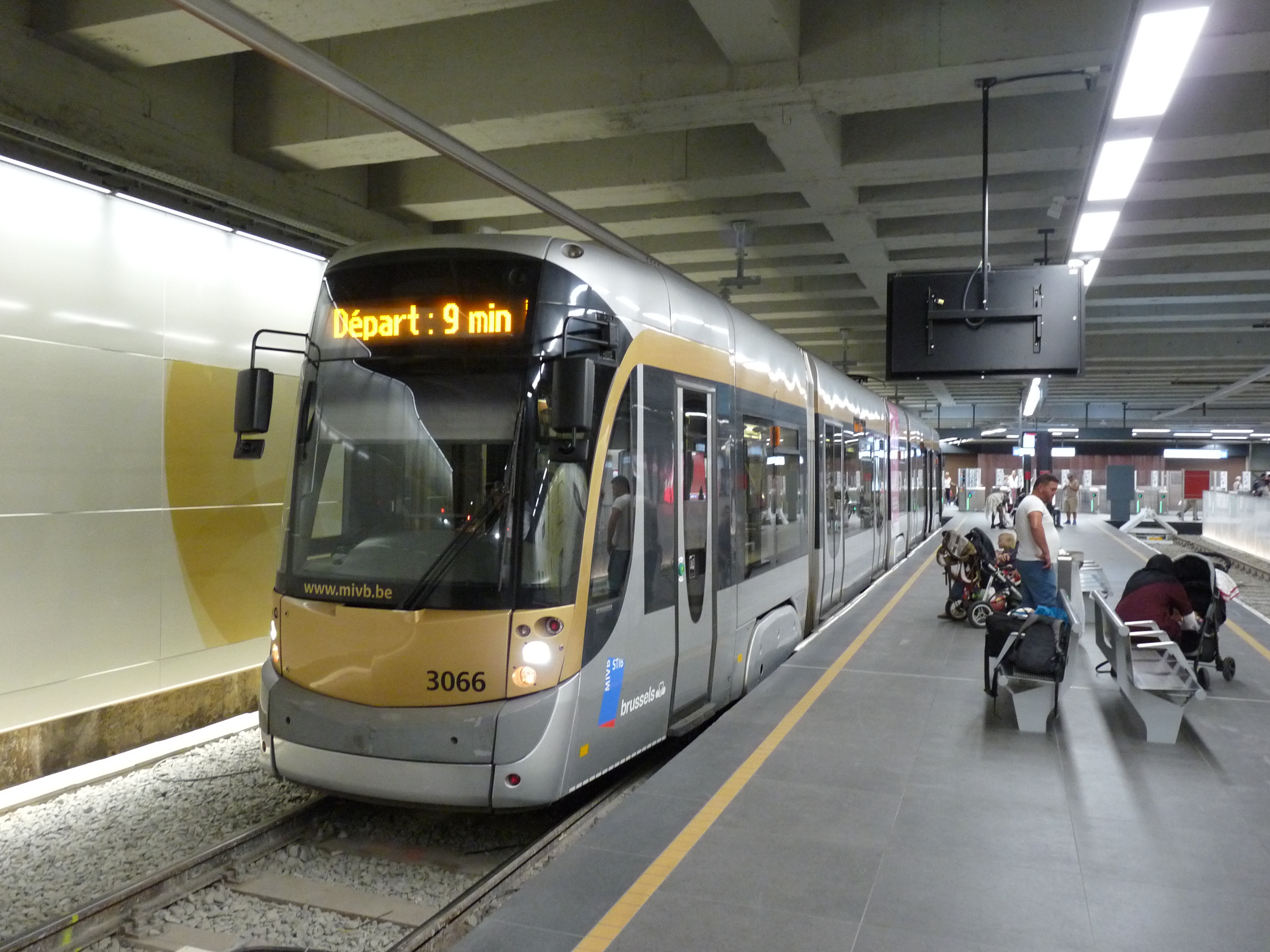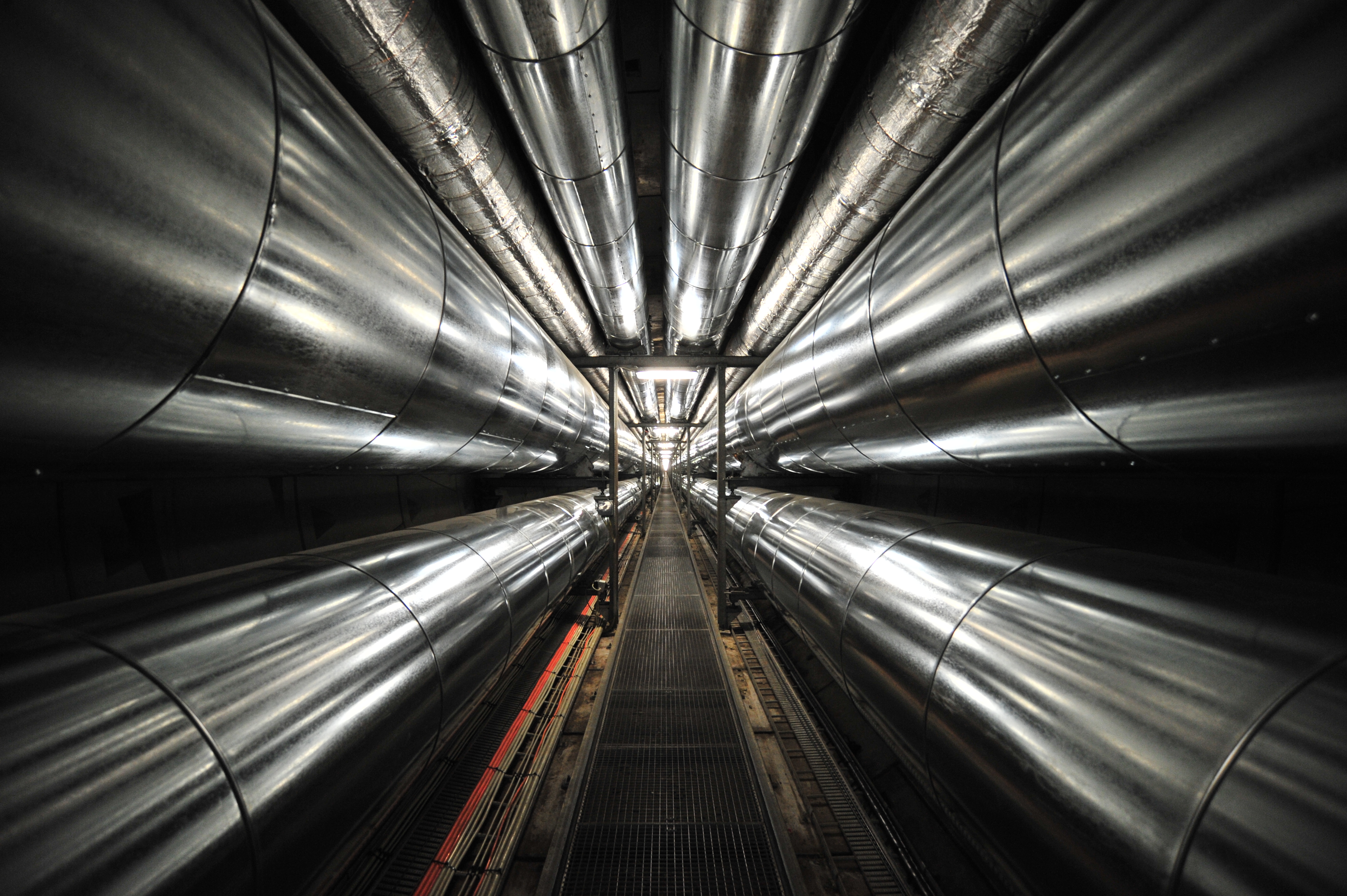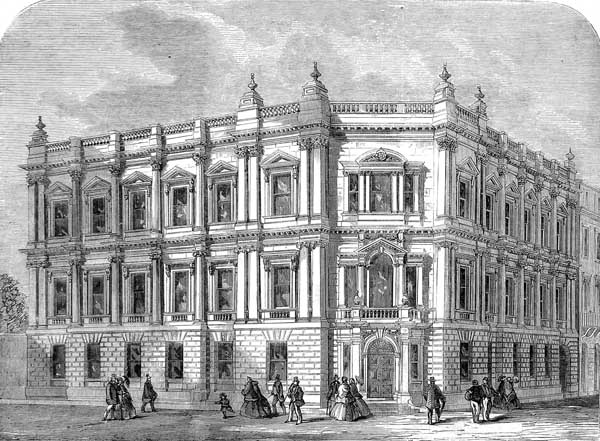|
Semi-metro
The term semi-metro refers to a category of urban rail transport in which trams run partly on grade separation, separate tracks to avoid conflicts with other traffic, by using tunnels and elevated railway, viaducts. This type of transit is also referred to by various other terms, including subway–surface light rail or subway–surface system. Dedicated stretches of track are designed to function similarly to regular rapid transit, metro or rapid transit lines. One key difference from metro lines (rapid transit) is that a metro line has an entirely conflict-free track, often completely grade separated, whereas semi-metro has lines which only partially run in tunnels and on viaducts. Systems described as semi-metro run with tram vehicles as they are usually developed from an existing tram network. Semi-metro routes are operated by either regular trams (with or without Types of trams#Low-floor, low floor) or with specially developed tramcars (light rail vehicles), such as the ... [...More Info...] [...Related Items...] OR: [Wikipedia] [Google] [Baidu] |
Light Rail
Light rail (or light rail transit, abbreviated to LRT) is a form of passenger urban rail transit that uses rolling stock derived from tram technology National Conference of the Transportation Research Board while also having some features from heavy rapid transit. The term was coined in 1972 in the United States as an English equivalent for the German word ''Stadtbahn'', meaning "city railway". From: 9th National Light Rail Transit Conference Different definitions exist in some countries, but in the United States, light rail operates primarily along exclusive Right_of_way#Rail_right_of_way, rights-of-way and uses either individual tramcars or multiple units coupled together, with a lower capacity and speed than a long heavy rail passenger train or rapid transit system. Narrowly defined, light rail transit uses rolling stock that is similar to that of a traditional tram, while operating at a higher capacity and speed, often on an exclusive right-of-way. In broader usage, light ... [...More Info...] [...Related Items...] OR: [Wikipedia] [Google] [Baidu] |
Urban Rail Transport
Urban rail transit is a wide term for various types of local rail systems providing passenger service within and around urban or suburban areas. The set of urban rail systems can be roughly subdivided into the following categories, which sometimes overlap because some systems or lines have aspects of multiple types. Types Tram A ''tram'', ''streetcar'', or ''trolley'' system is a rail-based transit system that runs mainly or completely along streets (with street running), with a relatively-low capacity and frequent stops; however, modern trams have a greater passenger capacity than traditional trams. Passengers usually board at the street or curb level, but low-floor trams may allow level boarding. Longer-distance lines are called ''interurbans'' or ''radial railways''. Modern trams also operate as self-propelled trains coupled through a multiple unit instead of individual trams and are often included within the broader term light rail; however, they differ in that trams f ... [...More Info...] [...Related Items...] OR: [Wikipedia] [Google] [Baidu] |
Tram
A tram (also known as a streetcar or trolley in Canada and the United States) is an urban rail transit in which Rolling stock, vehicles, whether individual railcars or multiple-unit trains, run on tramway tracks on urban public streets; some include segments on segregated Right-of-way (property access), right-of-way. The tramlines or tram networks operated as public transport are called tramways or simply trams/streetcars. Because of their close similarities, trams are commonly included in the wider term ''light rail'', which also includes systems separated from other traffic. Tram vehicles are usually lighter and shorter than Main line (railway), main line and rapid transit trains. Most trams use electrical power, usually fed by a Pantograph (transport), pantograph sliding on an overhead line; older systems may use a trolley pole or a bow collector. In some cases, a contact shoe on a third rail is used. If necessary, they may have dual power systems—electricity in city stre ... [...More Info...] [...Related Items...] OR: [Wikipedia] [Google] [Baidu] |
MBTA Green Line
The Green Line is a light rail system run by the Massachusetts Bay Transportation Authority (MBTA) in the Boston, Massachusetts, metropolitan area. It is the oldest MBTA subway line, and with tunnel sections dating from 1897, the oldest subway in North America. It runs underground through downtown Boston, and on the surface into inner suburbs via six branches on radial boulevards and grade-separated alignments. With an average daily weekday ridership of 101,000 in 2023, it is among the most heavily used light rail systems in the country. The line was assigned the green color in 1967 during a systemwide rebranding because several branches pass through sections of the Emerald Necklace of Boston. The four branches are the remnants of a large streetcar system, which began in 1856 with the Cambridge Horse Railroad and was consolidated into the Boston Elevated Railway several decades later. The branches all travel downtown through the Tremont Street subway, the oldest subway tun ... [...More Info...] [...Related Items...] OR: [Wikipedia] [Google] [Baidu] |
Light Metro
A medium-capacity system (MCS), also known as light rapid transit or light metro, is a rail transport system with a capacity greater than light rail, but less than typical heavy-rail rapid transit. MCS trains are usually 1 to 4 cars. Most medium-capacity rail systems are automated or use light-rail type vehicles. Since ridership determines the scale of a rapid transit system, statistical modeling allows planners to size the rail system for the needs of the area. When the predicted ridership falls between the service requirements of a light rail and heavy-rail rapid transit or metro system, an MCS project is indicated. An MCS may also result when a rapid transit service fails to achieve the requisite ridership due to network inadequacies (e.g. single-tracking) or changing demographics. In contrast with light rail systems, an MCS or light metro runs on an entirely grade separated exclusive right-of-way, and is therefore completely separated from other traffic. In some cases ... [...More Info...] [...Related Items...] OR: [Wikipedia] [Google] [Baidu] |
Kingsway Tramway Subway
The Kingsway tramway subway is a Tunnel#Cut-and-cover, cut-and-cover tunnel in central London, built by the London County Council, and the only one of its kind in Britain. The decision in 1898 to clear slum districts in the Holborn area provided an opportunity to use the new streets for a tramway connecting the lines in the north and south. Following the pattern of tramways in New York City, New York (the Park Avenue Tunnel (roadway), Murray Hill Tunnel) and Boston (the Green Line (MBTA), MBTA Green Line), it was decided to build this as an underground connection. The subway opened in 1906 and closed in 1952. Most of the southern end was adapted as a traffic underpass in 1964. The separate northern section was Listed building, listed at Grade II by Historic England in 1998. History 1902–1905: Construction The London County Council had for many years wanted to connect its "North Side" and "South Side" tramway networks in order to be able to send "North Side" trams for ove ... [...More Info...] [...Related Items...] OR: [Wikipedia] [Google] [Baidu] |
Rapid Transit
Rapid transit or mass rapid transit (MRT) or heavy rail, commonly referred to as metro, is a type of high-capacity public transport that is generally built in urban areas. A grade separation, grade separated rapid transit line below ground surface through a tunnel can be regionally called a subway, tube, metro or underground. They are sometimes grade-separated on elevated railways, in which case some are referred to as el trains – short for "elevated" – or skytrains. Rapid transit systems are usually electric railway, electric railways, that unlike buses or trams operate on an exclusive right-of-way (transportation), right-of-way, which cannot be accessed by pedestrians or other vehicles. Modern services on rapid transit systems are provided on designated lines between metro station, stations typically using electric multiple units on railway tracks. Some systems use rubber-tyred metro, guided rubber tires, magnetic levitation (''maglev''), or monorail. The stations typica ... [...More Info...] [...Related Items...] OR: [Wikipedia] [Google] [Baidu] |
Medium-capacity Rail System
A medium-capacity system (MCS), also known as light rapid transit or light metro, is a rail transport system with a capacity greater than light rail, but less than typical heavy-rail rapid transit. MCS trains are usually 1 to 4 cars. Most medium-capacity rail systems are automated or use light-rail type vehicles. Since ridership determines the scale of a rapid transit system, statistical modeling allows planners to size the rail system for the needs of the area. When the predicted ridership falls between the service requirements of a light rail and heavy-rail rapid transit or metro system, an MCS project is indicated. An MCS may also result when a rapid transit service fails to achieve the requisite ridership due to network inadequacies (e.g. single-tracking) or changing demographics. In contrast with light rail systems, an MCS or light metro runs on an entirely grade separated exclusive right-of-way, and is therefore completely separated from other traffic. In some cases ... [...More Info...] [...Related Items...] OR: [Wikipedia] [Google] [Baidu] |
M Ocean View Train At Forest Hill Station, November 2018
M, or m, is the thirteenth letter of the Latin alphabet, used in the modern English alphabet, the alphabets of several western European languages and others worldwide. Its name in English is ''em'' (pronounced ), plural ''ems''. History The letter M is derived from the Phoenician Mem via the Greek Mu (Μ, μ). Semitic Mem is most likely derived from a " Proto-Sinaitic" (Bronze Age) adoption of the "water" ideogram in Egyptian writing. The Egyptian sign had the acrophonic value , from the Egyptian word for "water", ''nt''; the adoption as the Semitic letter for was presumably also on acrophonic grounds, from the Semitic word for "water", '' *mā(y)-''. Use in writing systems English In English, represents the voiced bilabial nasal . The Oxford English Dictionary (first edition) says that is sometimes a vowel, such as in words like ''spasm'' and in the suffix ''-ism''. In modern terminology, this is described as a syllabic consonant (IPA: ). M is the ... [...More Info...] [...Related Items...] OR: [Wikipedia] [Google] [Baidu] |
Tunnel
A tunnel is an underground or undersea passageway. It is dug through surrounding soil, earth or rock, or laid under water, and is usually completely enclosed except for the two portals common at each end, though there may be access and ventilation openings at various points along the length. A pipeline differs significantly from a tunnel, though some recent tunnels have used immersed tube construction techniques rather than traditional tunnel boring methods. A tunnel may be for foot or vehicular road traffic, for rail traffic, or for a canal. The central portions of a rapid transit network are usually in the tunnel. Some tunnels are used as sewers or aqueducts to supply water for consumption or for hydroelectric stations. Utility tunnels are used for routing steam, chilled water, electrical power or telecommunication cables, as well as connecting buildings for convenient passage of people and equipment.Salazar, Waneta. ''Tunnels in Civil Engineering''. Delhi, India : Wh ... [...More Info...] [...Related Items...] OR: [Wikipedia] [Google] [Baidu] |
London County Council
The London County Council (LCC) was the principal local government body for the County of London throughout its existence from 1889 to 1965, and the first London-wide general municipal authority to be directly elected. It covered the area today known as Inner London and was replaced by the Greater London Council. The LCC was the largest, most significant and most ambitious English municipal authority of its day. History By the 19th century, the City of London Corporation covered only a small fraction of the metropolis. From 1855, the Metropolitan Board of Works (MBW) had certain powers across what is now Inner London, but it was appointed rather than elected. Many powers remained in the hands of traditional bodies such as parishes and the counties of Middlesex, Surrey, and Kent. The Local Government Act 1888 created a new County of London, with effect from 1889, and the English County council#England, county councils, of which LCC was one. This followed a succession of scandal ... [...More Info...] [...Related Items...] OR: [Wikipedia] [Google] [Baidu] |
Central London
Central London is the innermost part of London, in England, spanning the City of London and several boroughs. Over time, a number of definitions have been used to define the scope of Central London for statistics, urban planning and local government. Its characteristics are understood to include a high-density built environment, high land values, an elevated daytime population and a concentration of regionally, nationally and internationally significant organisations and facilities. Road distances to London are traditionally measured from a central point at Charing Cross (in the City of Westminster), which is marked by the statue of King Charles I at the junction of the Strand, Whitehall and Cockspur Street, just south of Trafalgar Square. Characteristics The central area is distinguished, according to the Royal Commission, by the inclusion within its boundaries of Parliament and the Royal Palaces, the headquarters of Government, the Law Courts, the head offices of a ve ... [...More Info...] [...Related Items...] OR: [Wikipedia] [Google] [Baidu] |









